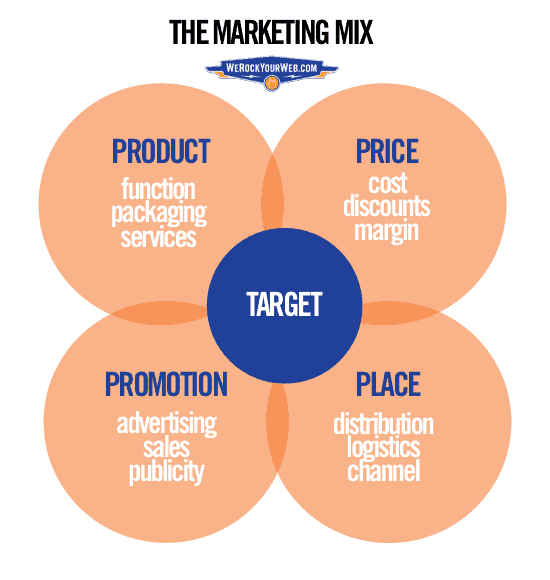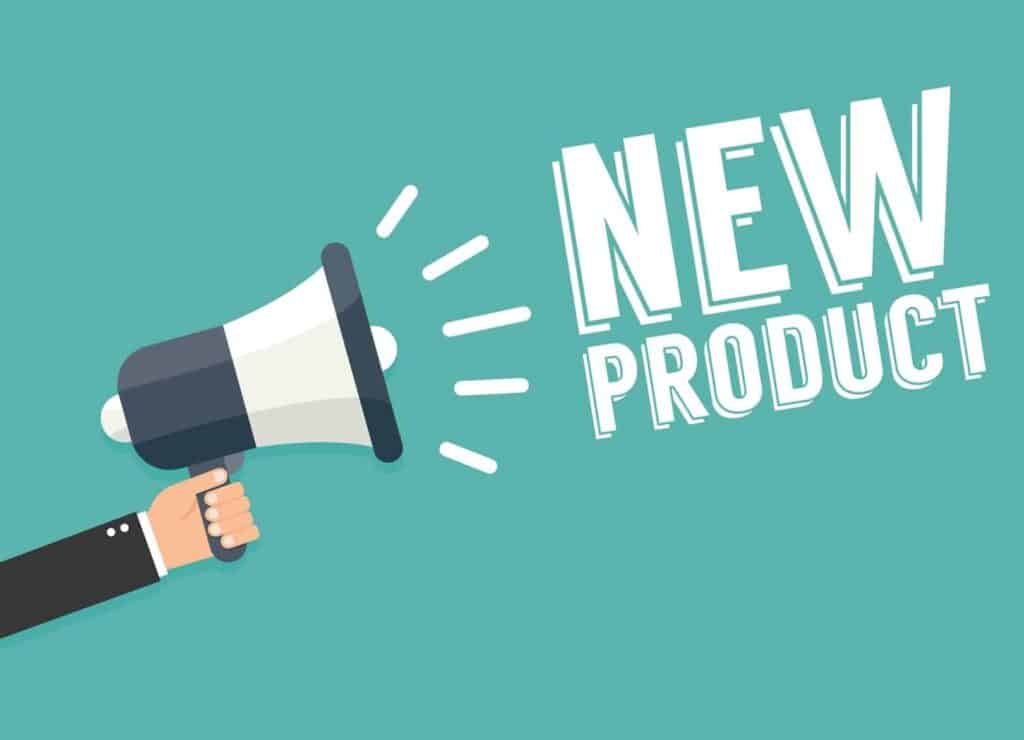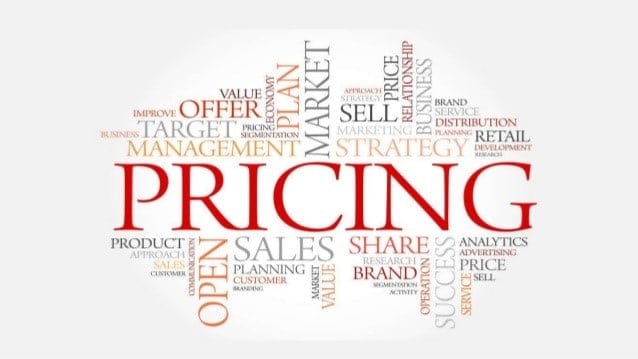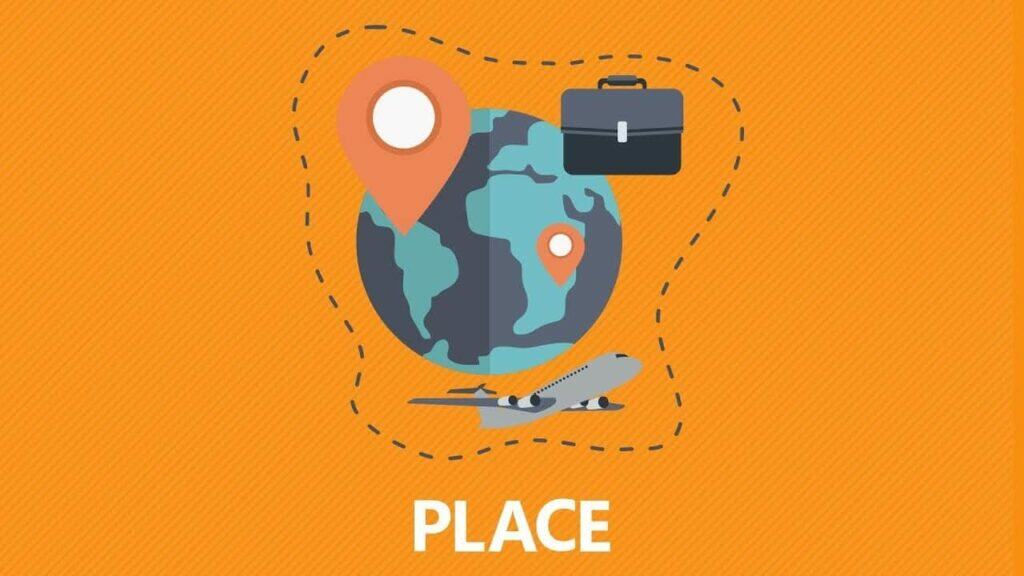Marketing is a simple enough task, right? Wrong! It’s not as easy as plain persuasion to buy a product or service. It requires a certain caliber, a level of dedication and a mind that scrutinises every possible opportunity and outcome.
But the essence of a true marketer is when she/he realises what makes marketing tick.
This is where the 4 P’s come into play.
So what are the 4 P’s?
Product
Price
Place
Promotion
You’ve heard these words before – maybe in school or when you’re dealing with these factors individually… but there’s so much more to these terms than what meets the eye. The first step is to not look at them as separate words, but as 4 links that bring the world of marketing together.
It’ll get really difficult to market anything at all unless the marketer understands the importance of each of these individually and looks at them as a part of the whole picture.

We will now look at each ‘pillar’ or ‘P’ individually.
Product
This is what your company sells. It can be a product (soaps, soft drinks, clothes, electronic devices etc), or a service (travel, insurance, education, recreation etc).
However, it’s not that easy. You can’t make anything you want and hope that it will sell on its own. Your product should be able to fulfil the needs of the consumer that it promised it would.
What your product should have:
- Uniqueness – what makes your product different from your competitor’s? You should give the consumer a very good reason to choose you over the rest – an extra feature or custom packaging. Make sure your product stands alone in the crowd.
- Usability – It’s one thing to look different. But does your product actually do a good job? Is it easy to use? Is it easier to use than a competitor’s?
How can you give the best product?
Ask the consumers what they want!
- The best way is to take a survey or a poll, and find out what consumers want. Their needs are what your product should fulfil.
- Ask them about their favorite products. If you have a fair idea about the majority of what people’s favorites are, then you know which products you can work on and which you can discard.
- Ask them if they buy from someone else and why – keep an eye on your competitors and which of their products are selling better or worse than yours. There’s always something to learn – be it success or failure.
A small piece of advice – if it’s a new product, before launching into manufacture…first get feedback from customers about the need and demand for a product like this.

Price
Ah, the tricky one. Deciding a price for your product is a huge decision because this determines how you’re going to look to your customers.
If you charge too high, you look like a rip off.
If you charge too low, your product looks mediocre.
How should you price your product?
- Depending on the cost price, determine how low you can go with the price.
- Looking at other products and the demand in the market, determine how high your customers are willing to pay.
- Look at your competitor’s price. Charging even one rupee less or more than your competitors can affect your sales drastically.
If you have these three points in mind, you can work out a price that hangs somewhere in between.

Place
Location is everything. Why? Because you need to be where your consumers are. Don’t expect them to come to you, you should go to them.
This is better explained through example.
Let us say you have a chain of successful software shops in the city and you decide to open one on the outskirts. After a few months you realise it isn’t doing well at all – that’s because you don’t have enough customers in that location!
This is not just for offline shops. Even in the online world, where you market your product is very important. If you own a cosmetics brand and you’ve advertised it over instagram or facebook then that’s good! But if you market it on a platform like LinkedIn, will it yield any result?
How to choose the right location?
- Where are your consumers? This helps you see consumer concentration and gives you target areas.
- Do you sell online or offline? Or both? You have your target areas locked on, now it’s time to see what kind of weapon to use while targeting the consumer.
- What is your medium of distribution? If you have a distributor in between, then you need to make sure the new location isn’t too far to ensure faster delivery. You, the medium and the consumer should go in a smooth flow without any glitches.
Are you B2B or B2C? Do you sell to another business (B2B) or to a consumer (B2C). This helps you pinpoint a suitable location.

Promotion
This is the sales part of the whole marketing process. You have a product, with the pricing and location ready…now how do you get people to buy it?
Promotion is often one of the toughest categories.you can either make or break at this level. You may have the best strategy in mind, but it may fail if you don’t keep these factors in mind:
- How are your competitors promoting their product? You don’t have to copy them, but you do have to know what kind of tactics they are using and which ones are working best. You can choose to implement them or improvise on them or even innovate a completely new one once you know what is good and what is bad.
- Which channels or medium of communication do your niche of consumers use the most? TV? Newspapers? Radio? The internet? Billboards? Depending on which channel of communication receives the most traffic from your customers, you can decide what kind of promotion would work best.
- Yes, even time matters. Most people watch TV in the evening. Most people use Instagram and Facebook during their breaks (12 PM-1PM; 6PM-10PM). The more people that are using the medium, the more chance of your ad being seen.
- Occasion – some products do well on some occasions rather than others. For example, firecracker sales hit a jackpot when it’s Diwali time. They may not have any sales at all for the rest of the year. So if your product has a season of demand, choose to market only during that time because it saves you a lot of time, money and effort!

CONCLUSION
It’s important to understand why we are talking about such simple terms in such detail. The idea is to not get lost in the crowd. All of the big companies and brands in the world clicked because they had a unique product, the right price, the perfect location and a strong promotion strategy.
If marketing has not worked for you till date then you need to get down to the basics, start asking the right questions and dig deeper into the market that you think you know really well.
Once you start working on the four pillars of marketing and focus on making them come together and fall into place…you can make your brand stand out like a lion in a sea of sheep!

